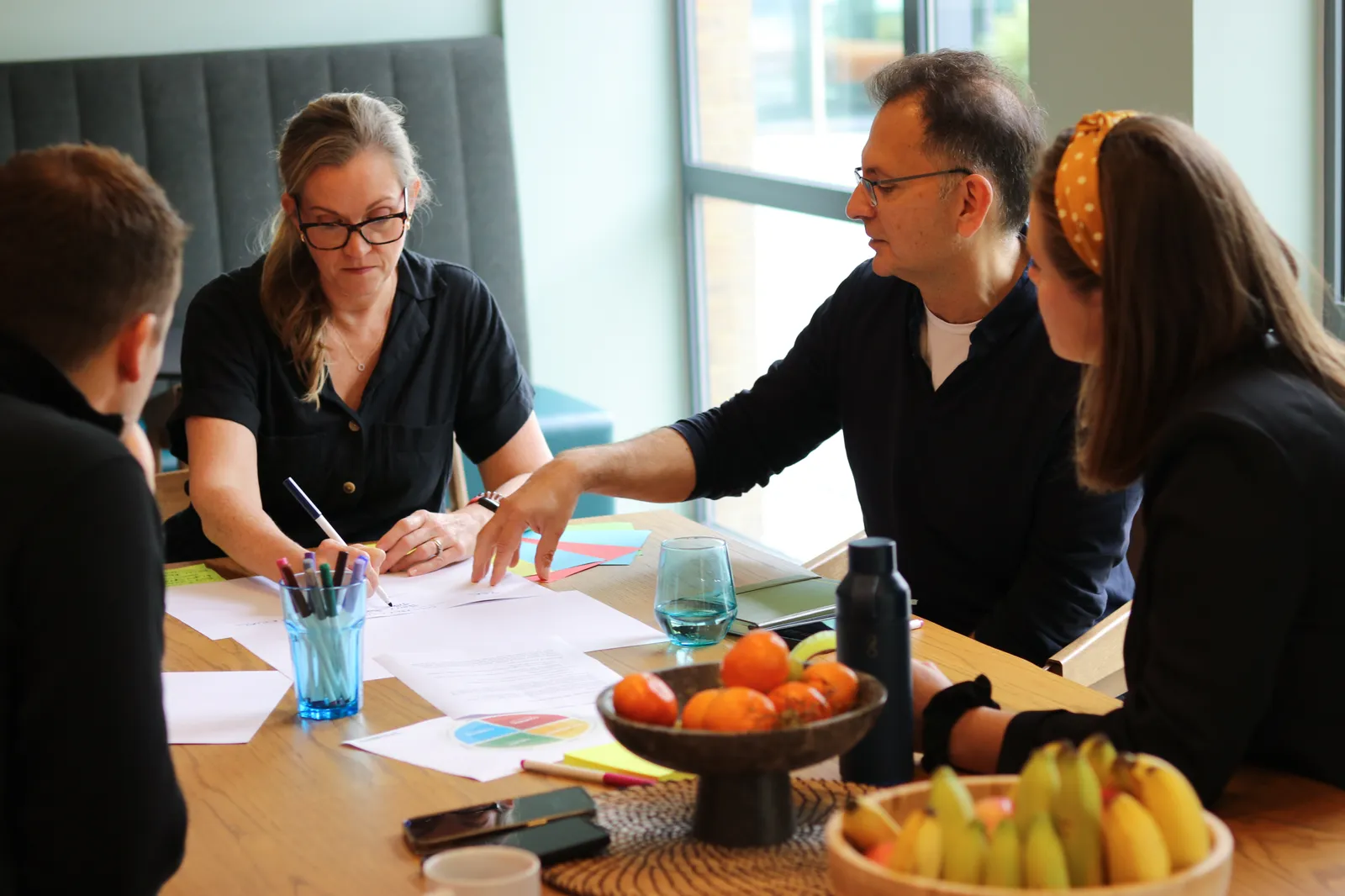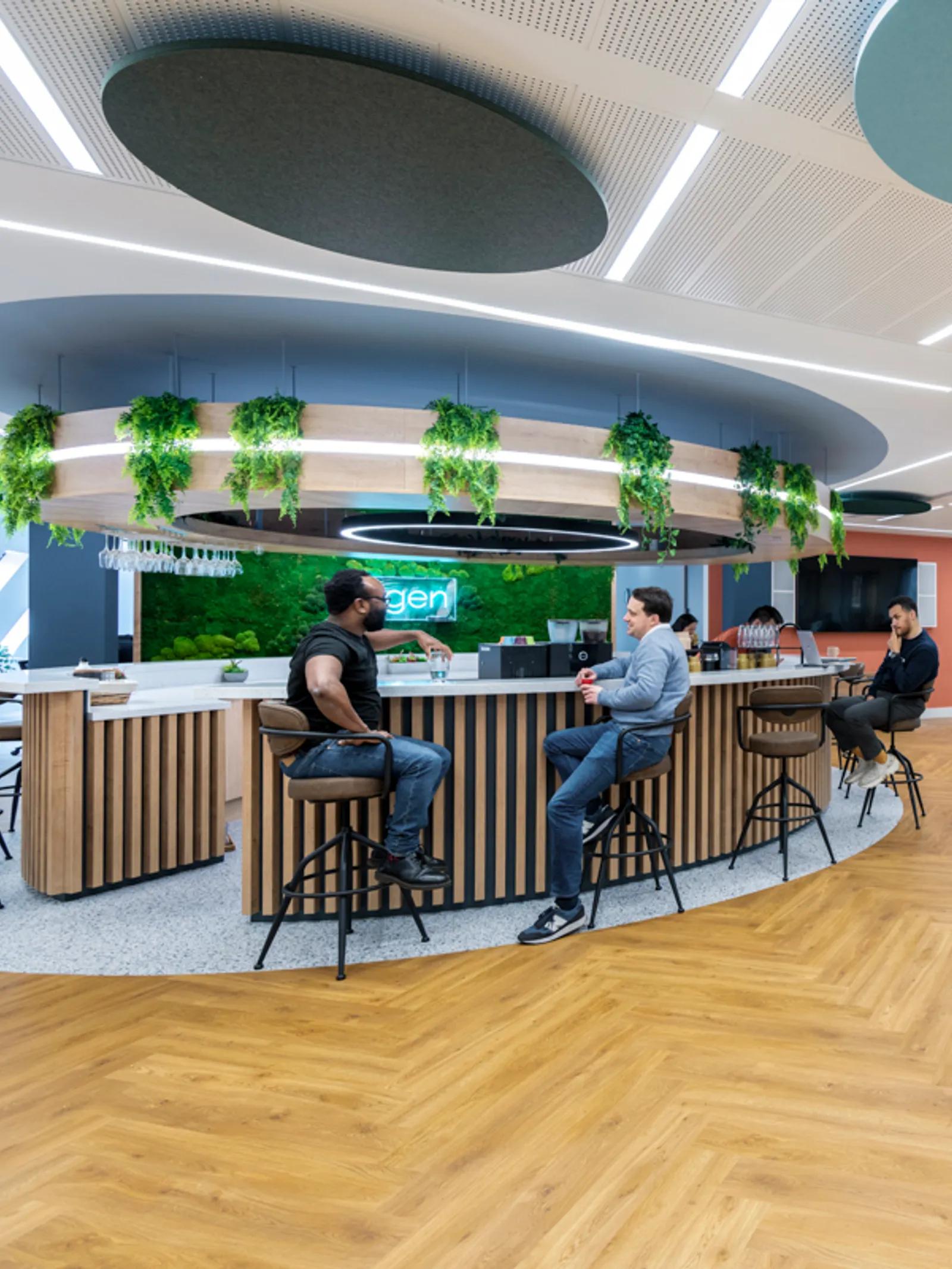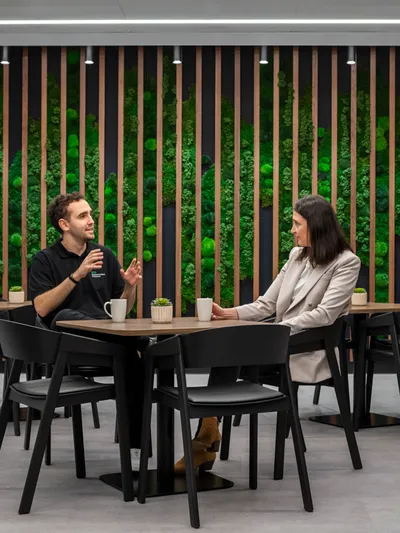Supporting neurodiversity in the workplace: Fostering inclusion through thoughtful workspace design
Recognising neurodiversity in the workplace is crucial for fostering a truly inclusive and innovative work environment. By embracing the unique strengths and perspectives of individuals with different neurodivergent conditions such as autism, ADHD, dyslexia, and more, organisations can benefit from increased creativity, problem-solving abilities, and overall productivity. To do so, however, workplaces must be willing to adapt the working environment to ensure that neurodivergent people are catered for.
It is essential for employers to create a supportive and understanding culture that encourages neurodiverse employees to thrive and contribute their valuable skills to the team. Embracing neurodiversity not only benefits individuals with neurodivergent conditions but also enhances the overall success and diversity of the workplace.
What is neurodiversity?
Neurodiversity refers to the natural variation in human cognitive function. This includes conditions like Autism Spectrum Disorder (ASD), Attention Deficit Hyperactivity Disorder (ADHD), Dyslexia, Dyspraxia, and Tourette Syndrome. While these conditions can present challenges, they also come with unique strengths that enrich a team environment. For instance, people with ASD often excel in areas of focus, attention to detail, and pattern recognition. Those with ADHD may bring boundless creativity and problem-solving skills.
Benefits of neurodiversity in the workplace
Creating a neuro-inclusive workplace isn't just about social responsibility; it's good business too. Studies by Deloitte suggest that teams with neurodiverse individuals can be up to 30% more productive. A Harvard Business Review article highlights that a diverse workforce fosters innovation and creativity.
One of the key benefits of neurodiversity is the promotion of innovation and creativity in various industries. Neurodivergent individuals often demonstrate excellent problem-solving skills, a sharp attention to detail, and can provide fresh perspectives that can lead to groundbreaking ideas and solutions. By fostering a neurodiverse workforce, businesses can tap into this pool of untapped talent and drive innovation within their organisations.
Additionally, embracing neurodiversity promotes inclusivity and diversity, creating a more positive and supportive work environment for all employees. Ultimately, recognising and supporting neurodiversity not only benefits individuals with neurological differences but also contributes to the overall success and growth of businesses and society as a whole.
Here at Area, we believe every employee deserves the environment they need to thrive. Let's explore some common neurodiversities and how workspace design can be adapted to cater to their specific needs.
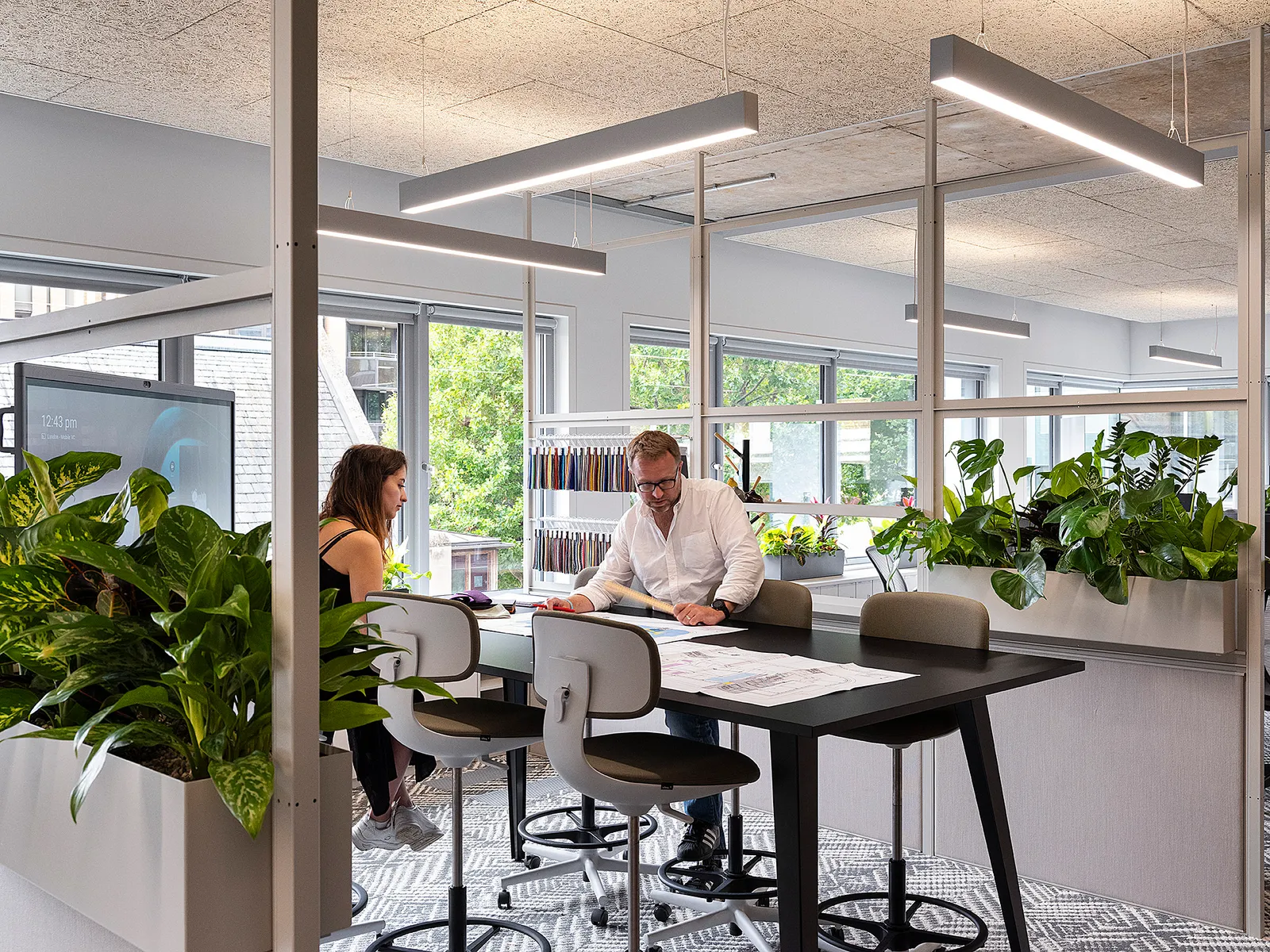
Understanding common neurodiversities
Autism Spectrum Disorder (ASD)
People with ASD may experience sensory sensitivities, including bright lights, loud noises, and strong smells. They may also find social interaction and communication challenging.
Attention Deficit Hyperactivity Disorder (ADHD)
Individuals with ADHD can struggle with focus and organisation. They may be easily distracted by background noise or visual clutter.
Dyslexia
People with dyslexia have difficulty processing written language. This can make reading emails, reports, and other documents challenging.
Dyspraxia
Dyspraxia affects motor skills and coordination. This may make it difficult for individuals with dyspraxia to use standard office equipment efficiently.
Tourette Syndrome
People with Tourette Syndrome may experience involuntary tics, which could be physical or vocal.
One common misconception is that neurodiverse individuals are less capable or less productive than neurotypical employees. In reality, neurodiverse individuals bring valuable skills and perspectives to the table. Another misconception is that all neurodiverse individuals are the same, when in fact, each person is unique and may require different types of support.
By creating a flexible and adaptable workspace that caters to neurodiversity, you're not just making your office more welcoming, you're unlocking the full potential of your team. Think of it as a long-term investment in your company's success.
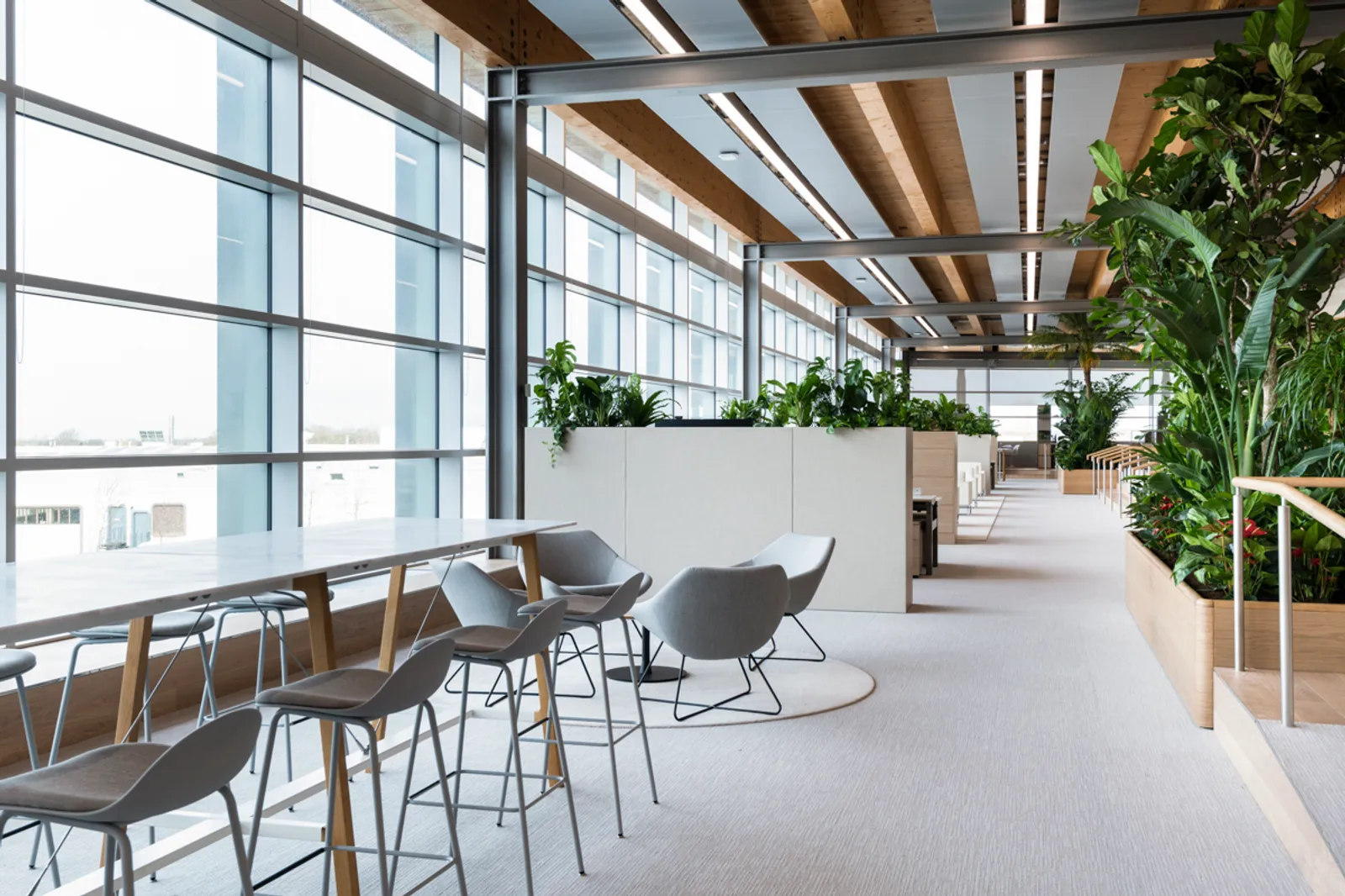
Neurodiversity at work: Adapting your workspace and designing for neurodiversity
At our recent ‘Neurodiversity in the Workplace’ roundtable session, which we hosted with 360 Workplace, Sketch Studios and Enable Disability & Inclusion Consultants as part of Neurodiversity Celebration Week, our focus was on how to better understand neurodiversity inclusion in the workplace. The primary challenge was to ensure that workplaces can offer choice and flexibility to help those with different work styles and particular needs.
There is no shortage of research to support the notion that individuals with diverse neurological profiles require a different approach when it comes to creating a workspace that works for them. By offering a range of different environments, all employees will benefit from being able to choose where and how they work most effectively. Incorporating elements such as adjustable furniture, movable partitions, and modular layouts can also further enhance flexibility and accommodate diverse working styles.
In today's diverse work environments, it is essential for employers to consider the varying needs and preferences of all employees, including those with neurodiverse conditions. By adapting workspace design to accommodate these individuals, organisations can create a more inclusive and supportive environment that promotes productivity, well-being, and creativity. From minimising sensory distractions to providing alternative communication methods, making small adjustments can have a significant impact on the overall work experience for neurodiverse employees. By recognising and embracing neurodiversity in the workplace, organisations can foster a more equitable and fulfilling work environment for all individuals.
The challenges some neurodivergent people may face include:
Sensory sensitivities:
Lighting: Harsh overhead lighting can be overwhelming for individuals with ASD. Consider installing dimmers or offering adjustable task lamps to allow for personalised light control.
Noise: Open-plan offices can be a nightmare for those with auditory sensitivities. Invest in soundproofing measures like acoustic panels or designated quiet spaces for focused work.
Temperature: Some neurodivergent individuals may be more sensitive to temperature fluctuations. Implement climate control systems with individual user controls where possible.
Smell: Strong-scented air fresheners or overflowing trash cans can be overwhelming. Encourage natural ventilation and opt for fragrance-free cleaning products.
Focus and organisation:
Defined workspaces: Provide clear boundaries between work zones and social areas. Consider offering a variety of workspace options - private offices, quiet booths, and collaboration areas - to cater to different needs.
Declutter and minimise distractions: Minimise visual clutter in the workspace. Utilise clear storage solutions, promote paperless communication and consider using partitions or greenery to define work areas.
Assistive technology: Explore software tools like noise-cancelling headphones, specialised keyboards, and text-to-speech applications that can support individuals with focus and processing challenges.
Communication and information processing:
Visual aids: Utilise clear signage, colour-coding systems, and visual aids like flowcharts and diagrams to enhance communication and information processing.
Multiple communication channels: Offer alternative communication options like instant messaging, project management software, or video conferencing tools to cater to those who may find face-to-face communication challenging.
Accessibility features: Ensure documents and presentations are accessible to individuals with dyslexia. Use clear fonts, avoid excessive text formatting, and offer alternative formats like audio files.
Movement and tactile needs:
Active seating options: Consider offering a variety of seating options like standing desks, exercise balls, and ergonomic chairs to cater to different physical needs and movement styles.
Fidget toys: Allow the use of discreet fidget toys for individuals with ADHD or anxiety. These can help with focus and concentration.
Accessible workstations: Ensure workstations are accessible for individuals with dyspraxia. Offer ergonomic keyboards and adjustable desks that accommodate various needs.
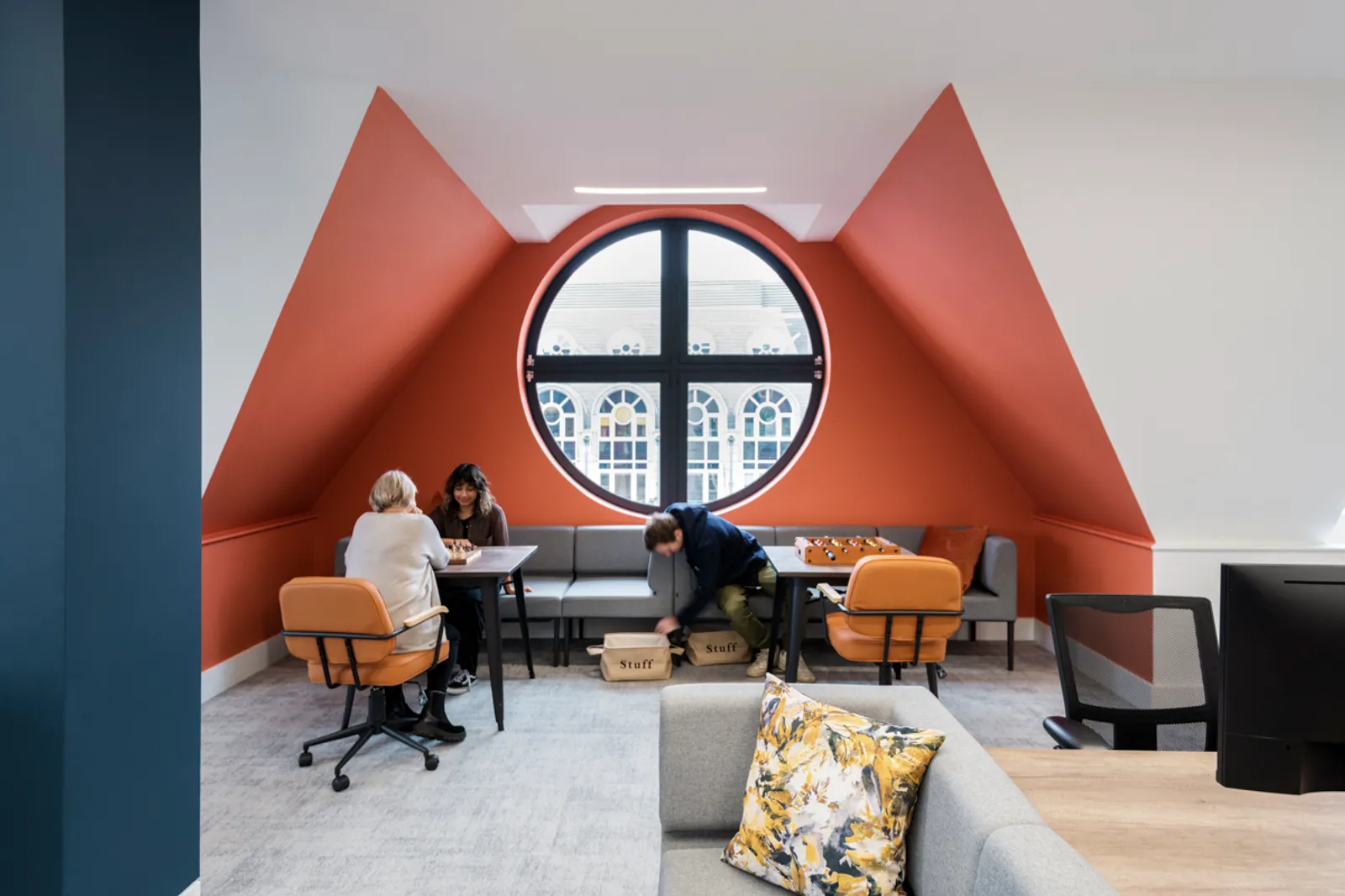
Creating a culture of inclusion
In today's diverse society, creating a culture of inclusion is crucial for fostering a sense of belonging and acceptance. Organisations must actively promote diversity, neurodiversity and equality to ensure that all individuals feel valued and respected in the workplace. By embracing differences companies can harness the unique perspectives and experiences of their employees. Encouraging open communication, providing training on unconscious bias, and implementing inclusive policies are essential steps towards building a truly inclusive environment. Ultimately, by prioritising inclusivity, organisations can cultivate a positive work culture where everyone feels empowered to contribute and thrive.
Here are some tips to achieve a culture of inclusion in your workplace:
Normalise neurodiversity: Raise awareness about neurodiversity through workshops and/or training sessions.
Visual aids: Utilise whiteboards, flipcharts, and digital displays alongside verbal communication to cater to different learning styles. Encourage the use of visual aids like task lists and project management software.
Meeting diversity: Offer a variety of meeting formats to accommodate different communication preferences. Consider asynchronous communication tools and provide options for individual contributions outside of group settings.
Assistive technology: Invest in software and tools that can assist employees with dyslexia, such as text-to-speech programs and grammar checkers.
Empowering neurodivergent people - a leader led approach
Equipping employees with the right tools, resources, and support systems empowers them to navigate their sensory and cognitive differences. By doing so, we enable them to not just survive the workday, but truly thrive in the workplace and contribute their best selves.
Empowerment begins with a commitment from workplace leaders, and an acknowledgement that people shouldn't have to reshape themselves to fit a rigid mould. Rather, it's about leaders driving inclusion efforts and playing an active part in fostering an environment that celebrates and caters to diverse needs.
Encouraging honest dialogue between employees and managers about individual preferences and needs is crucial. This allows us to identify adjustments and accommodations that promote inclusivity for everyone. Provision of training for employees on neurodiversity awareness and how to create more inclusive environments will help to raise awareness and foster a culture of empathy and understanding.
Area: Your partner in inclusive workplace design
While huge steps have been made in advancing our understanding of neurodivergent people's needs in the workplace, there is still plenty of progress to be made. Opportunities to collaborate with international partners, government agencies and advocacy groups can help to advance knowledge and understanding and push inclusion efforts to create best practices that can be implemented worldwide.
At Area, we specialise in designing and implementing functional and creative workspaces tailored to your businesses and workforce's specific needs. We understand the importance of a space that fosters well-being and productivity for a neurodiverse workforce. Our team of experts can help you assess your current office environment and develop a comprehensive design plan that promotes inclusivity and unlocks the full potential of your team.
Ready to take the next step? Contact us today to see how we can help you create a workspace that caters to not only your business needs but that of your diverse team.
